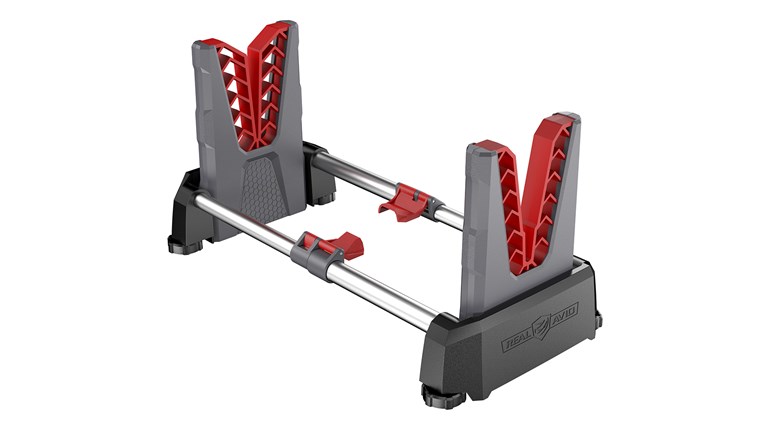
Tuf-Glide, from Sentry Solutions, dries quickly, leaving behind a dry cleaner/lubricant/protectant.
The other day I went out and shot up all the defensive ammo I’ve been carrying in my EDC rig for the past 12-plus months, then sat down for a good in-depth cleaning of the pistol and magazines before loading new ammo.
We live in East Texas, where humidity levels are routinely high. After a normal range session, I clean the pistol and wipe the top and outsides of the magazine(s) to remove any debris on them.
When I do this, I disassemble the magazines as well, to clean them inside and out, then wipe each with an oily cloth (made by Hoppe’s). I was dismayed to find that the metal bases inside the magazines had a light bit of surface rust.
For those in high-humidity areas, is it wise to add a small drop of gun oil to the magazine baseplate area? I am leery of oil on the ammo—where it might cause problems. But, I also want to fight this “enemy of firearms” and keep my EDC reliable and functioning. I’m also, now, uncertain about the components that are not seen in a normal field-stripping and cleaning routine. My gun runs quite reliably—I am not noticing any problems with function at all—but I don’t want something to show itself at an inopportune time.
John Unger, Huntsville, TX
There are two enemies of firearms: politicians and rust. While I can’t do much—other than vote—regarding the former, I can help with several suggestions on the latter in regard to your everyday carry pistol.
Regardless of how an everyday-carry gun is carried, it must be in a state of maximum operational readiness at all times. In the case when it is called to duty, it must work as expected first time, every time. Assuming that it is functionally sound and is accompanied with quality ammunition, being clean and lubricated properly pretty much guarantees the equipment will perform as expected when failure is absolutely not an option.
Aside from the removal of dirt, debris and firing residue, the removal and prevention of oxidation and corrosion from all metal parts is a function of cleaning and applying a lubricant/preservative. Hidden areas such as the inside of magazines, the underside of grip plates or other areas where moisture and/or perspiration can enter must be treated to prevent oxidation and corrosion, as well.
Any ferrous metal—metal that contains iron—will rust when exposed to moisture. Rust prevention is simply shielding the part or parts from the environment. Blued steel, such as the SIG Sauer P220 floor plate, can be protected by a lubricant or surface treatment that provides a molecular barrier between the surface of the metal and the atmosphere.
The use of a cloth or an oily patch, when used to cover 100 percent of the exposed surfaces will seal the metal, providing the desired molecular barrier and stop rust from forming. There are two caveats to be aware of when using this method, though. The first is lubricants and preservatives of this type don’t last forever. They will degrade over time and will need periodic reapplication. The second is the application of the preservation material too liberally, which tends to collect dirt and can potentially contaminate ammunition under certain conditions.
There is another option for rust prevention and surface preservation of metals used in firearms as well as friction reduction on moving bearing surfaces. Dry lubricants, such as those pioneered by Sentry Solutions several decades ago, do an excellent job of protecting and lubricating metal for extended periods of time without the risk of contaminating ammunition or accumulating dirt or other residue over time. Once the product is applied according to the manufacturer’s recommendations, it dries in minutes, leaving a film of protection and lubrication visible to the eye. Reapplication is necessary only when friction or abrasion has removed the material, which can be recognized at a glance.
I personally use dry lubes on my pocket-carry guns, as well as the guns I carry close to my body. Not only are they lubricated and protected from the elements, but they also do not contaminate my clothing and holsters as is possible by the leaching of liquid lubricants.
An additional suggestion that I have and practice is to maintain the magazines associated with the gun every time the gun is cleaned, inspected and lubricated. Each of the magazines is cleaned, inspected and surface treated to prevent rust and corrosion.



































